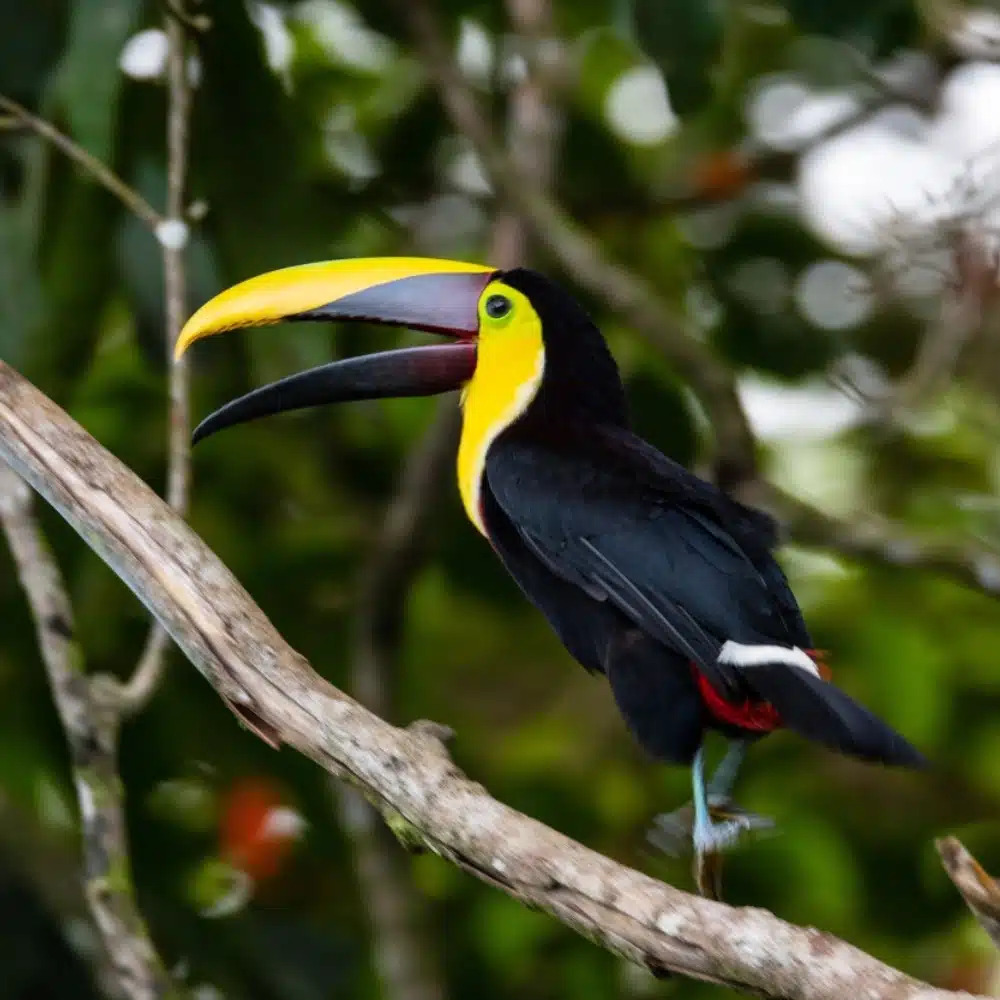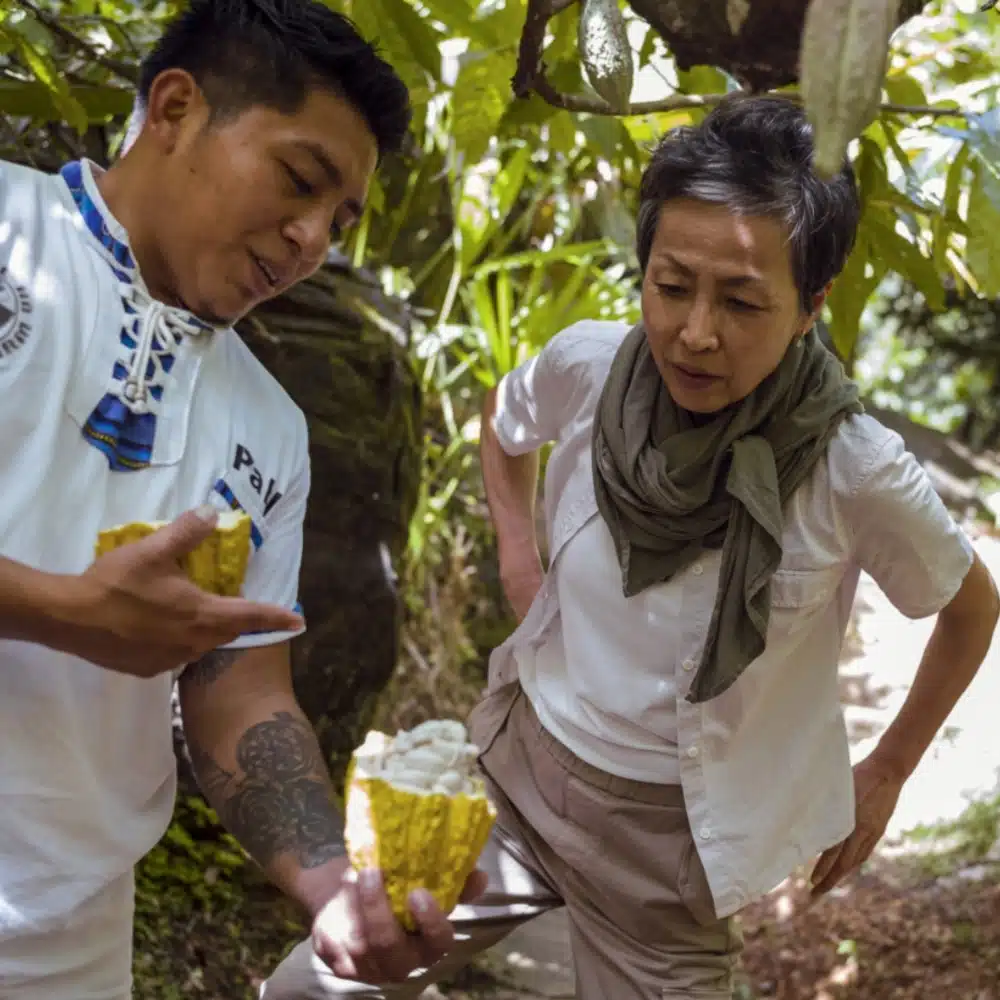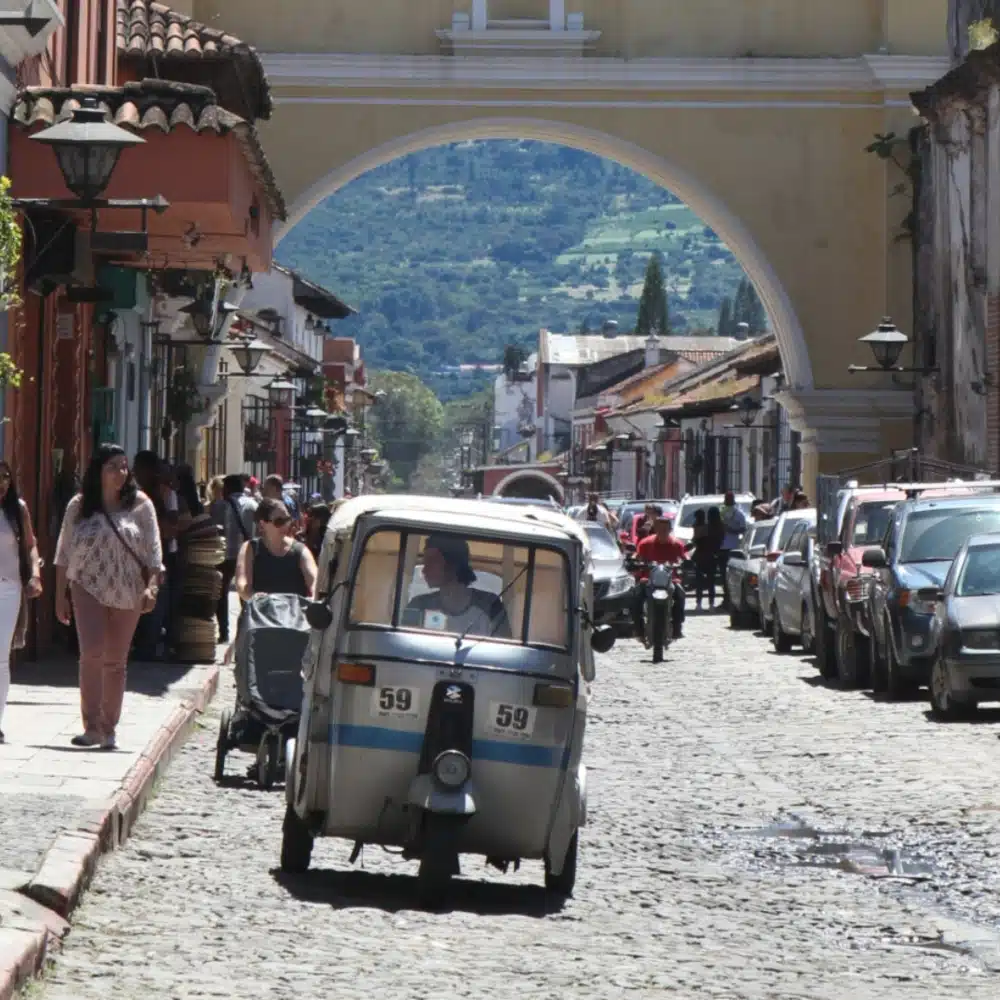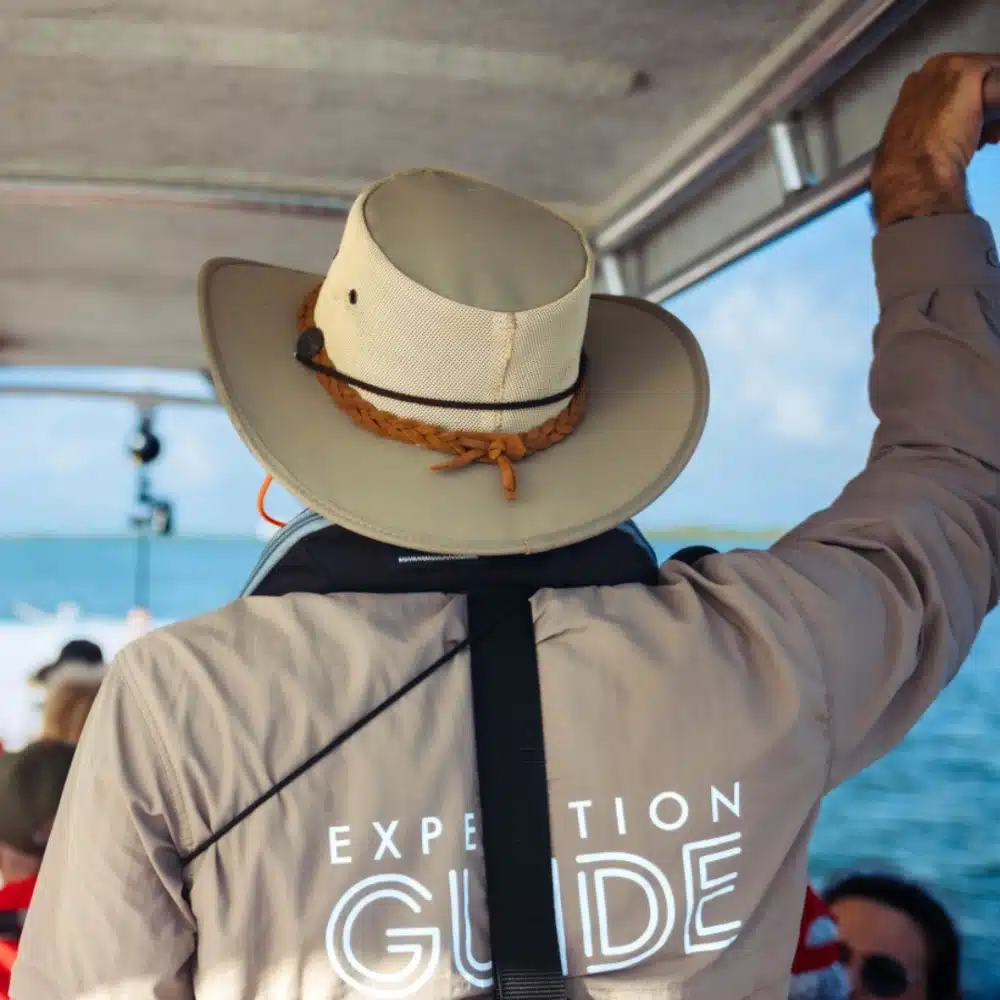Central America is a region of endless coastlines, meandering rivers, dense mangroves, and emerald-green hills that rise from the surf and up to soaring peaks and steaming volcanoes. It is also undoubtedly a paradise for bird lovers. You’ll want to keep your eyes peeled and your camera at the ready as you embark on a PONANT luxury expedition ship to Central America; you never know what secrets await you in the canopies.
The entirety of Central America is a playground for ornithologists and bird photographers alike. A lavish profusion of ecosystems exists in a relatively small area here. Not one but two major bodies of water lap at its shores – the Pacific Ocean to the west and the Caribbean Sea to the east. The forests of Costa Rica, Panama, Guatemala, Belize, Mexico, and other countries funnel rainwater into rivers and ravines and down to lush beaches, nourishing an ecosystem that has sustained life writ large – and particularly life on the wing – for millennia. The diversity of winged creatures here boggles the mind. So where do you start when literally hundreds of species surround you?
Our Photo Ambassadors – professional photographers of international notoriety who cruise with you on many of our expeditions, including this one – have some ideas. Read on for some of their tips. But first, let’s learn a little more about the beautiful aviary awaiting you in Central America.
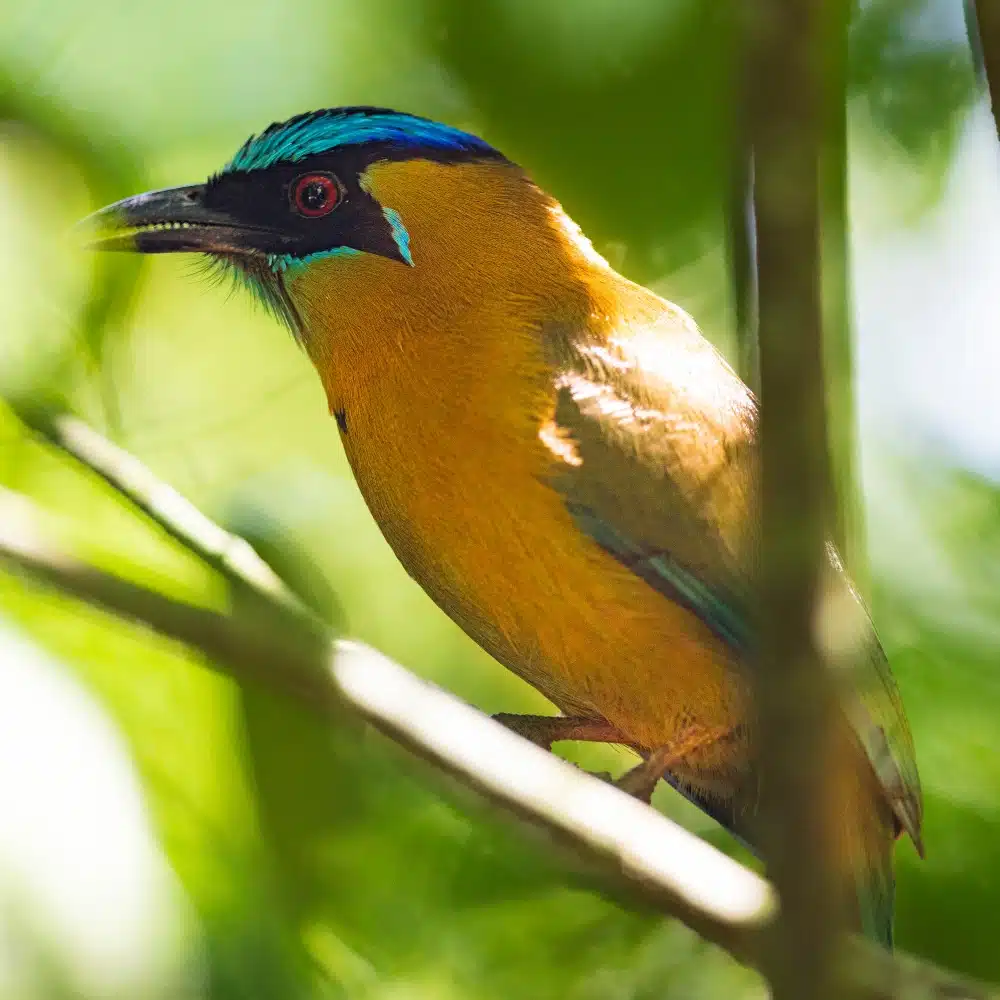
Some Fine-Feathered Friends in Central America
Many of PONANT’s bird enthusiasts join our luxury small ship expeditions in Central America in search of what we’ll call “The Big Four.” Though some countries might claim any one of these as their own, they can be seen in all the lush rainforests that sidle up to the region’s pristine coastlines.
The resplendent quetzal is the most elusive and is often referred to as the Holy Grail for avid birders. Its iridescent green plume and black wings make it difficult to spot in forest canopies. Though most often associated with Costa Rica, it is so beloved in Guatemala that it appears on the national flag.
The scarlet macaw – a species of parrot – is one of the most beautiful to see taking wing, its brightly plumed body cutting a streak of red, yellow, and blue and its long tail trailing behind. They are typically seen flying solo or in pairs.
Though the quetzal and macaw are breathtakingly beautiful, the toucan is striking for another reason. The most widely known species – the toco toucan – sports a massive beak, so large that it’s a wonder it can fly! But fly it can. This unusual-looking bird also spends its time picking at fruit in fruit trees. Toucans vary in size, beak heft, and color, with more than 40 species calling Central America home, including the smaller toucanet.
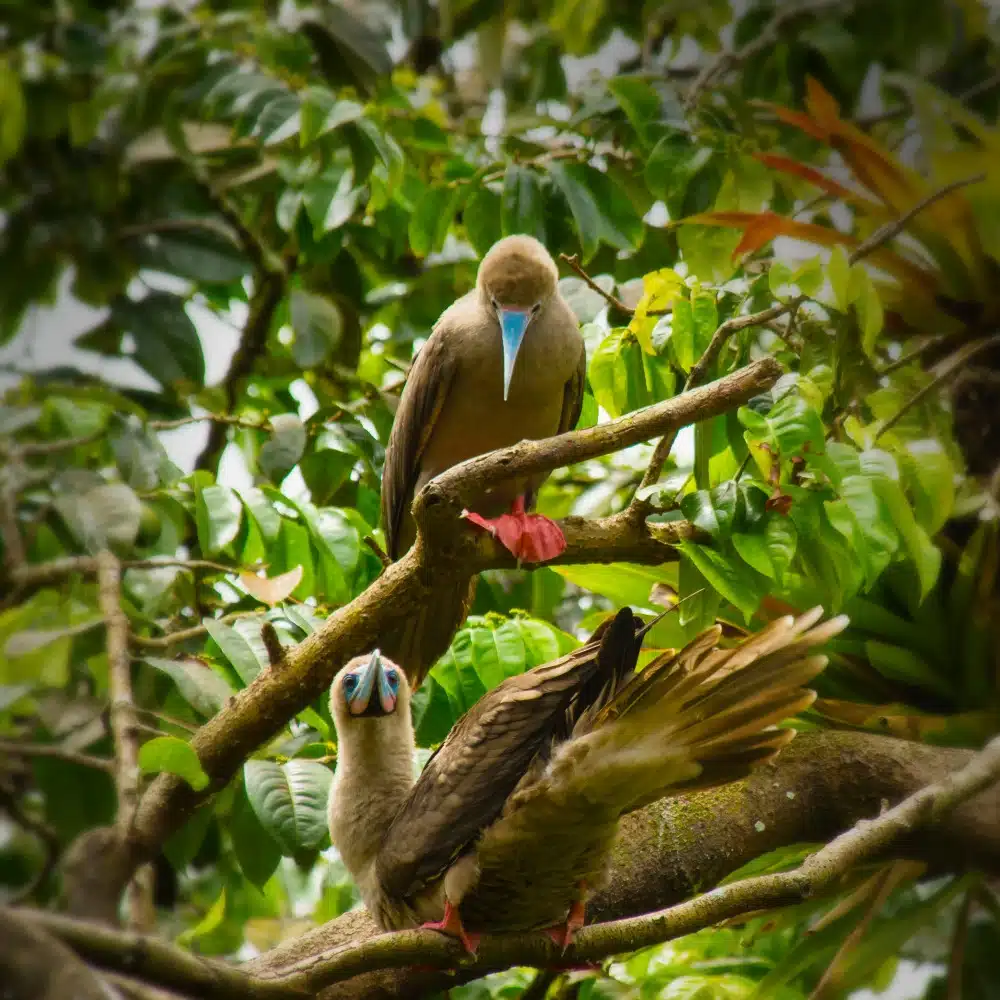
Keep an eye out in the upper canopy for the harpy eagle, almost as elusive as the quetzal. It’s the largest raptor in the area and – with its slate-black plumage, dark-eyed stare, and powerful talons – is one of the most imposing hunters in the rainforest.
The river and marine environments host different kinds of aviaries altogether. Along the coastlines of Central America, you may spot terns, pelicans, petrels, sandpipers, and other birds that feed off the ocean. Meanwhile, herons, egrets, spoonbills, and kingfishers perch on riverbanks and in riverside trees to gain the upper hand in the contest for freshwater fish.
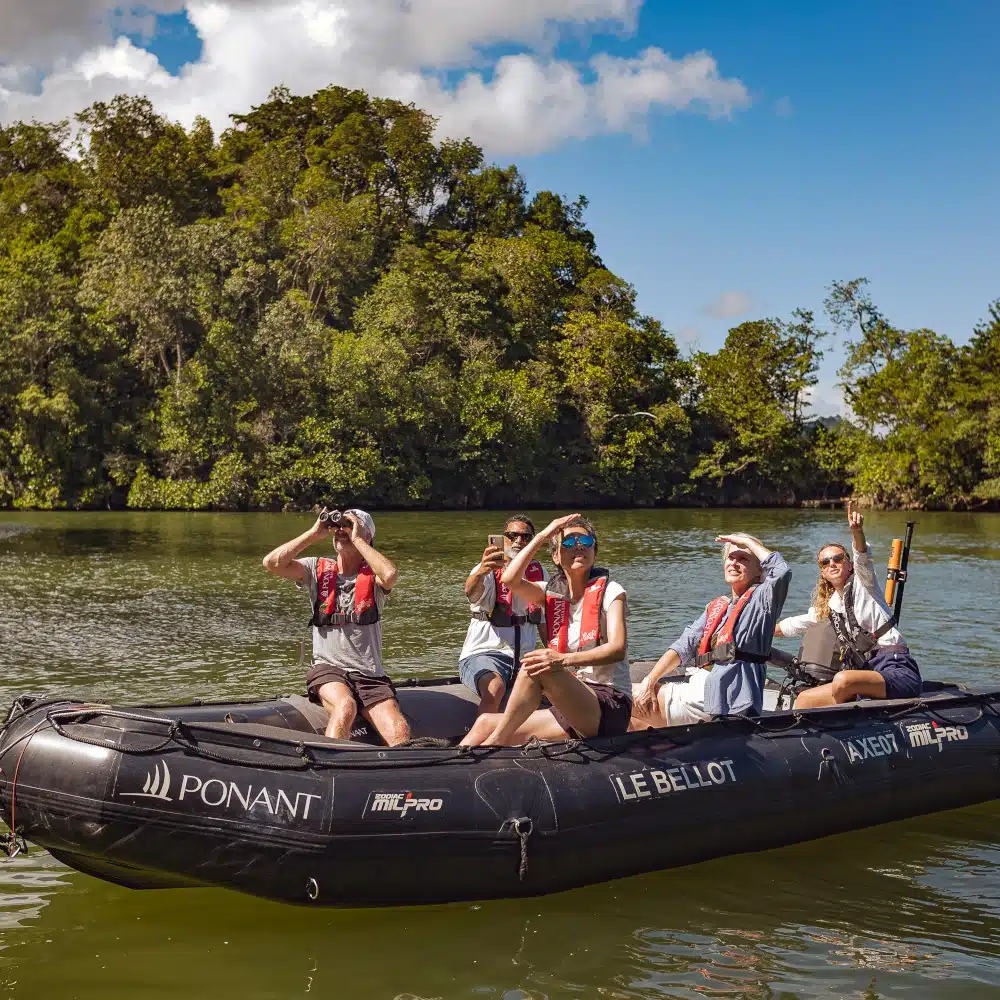
Your Tips from PONANT Photo Ambassadors
To capture the most captivating bird images, PONANT Photo Ambassador Sue Flood says, you have to be prepared. Sue – who spent eleven years working for the BBC Natural History Unit on award-winning documentary series like “Planet Earth” with Sir David Attenborough – suggests that you read up on your destination before you depart. Satiate your curiosity about your main interests (from history to culture to wildlife). That way, you’re less likely to be distracted by cityscapes and ancient ruins and more likely to stay focused on your goal of looking to the sky and the canopy for a flutter of feathers.
Second, make sure you’re fully familiar with your camera, especially if it’s new. You don’t want to be fumbling with its functions while that perfect shot is flying away.
To practice shooting birds on the wing, fellow Photo Ambassador, Cindy Miller Hopkins, suggests a walk in your neighborhood, or a visit to your local zoo to “learn by doing.” Play around with framing a shot, with zooming in and out, and with panning a bird or group of birds as they fly through the air.
Most importantly, you must be ready to snap photographs at a moment’s notice. When you least expect it, you’re likely to hear a flutter or a rustle in the trees or spy a flock as it traces the shore in search of a meal in the waters below.

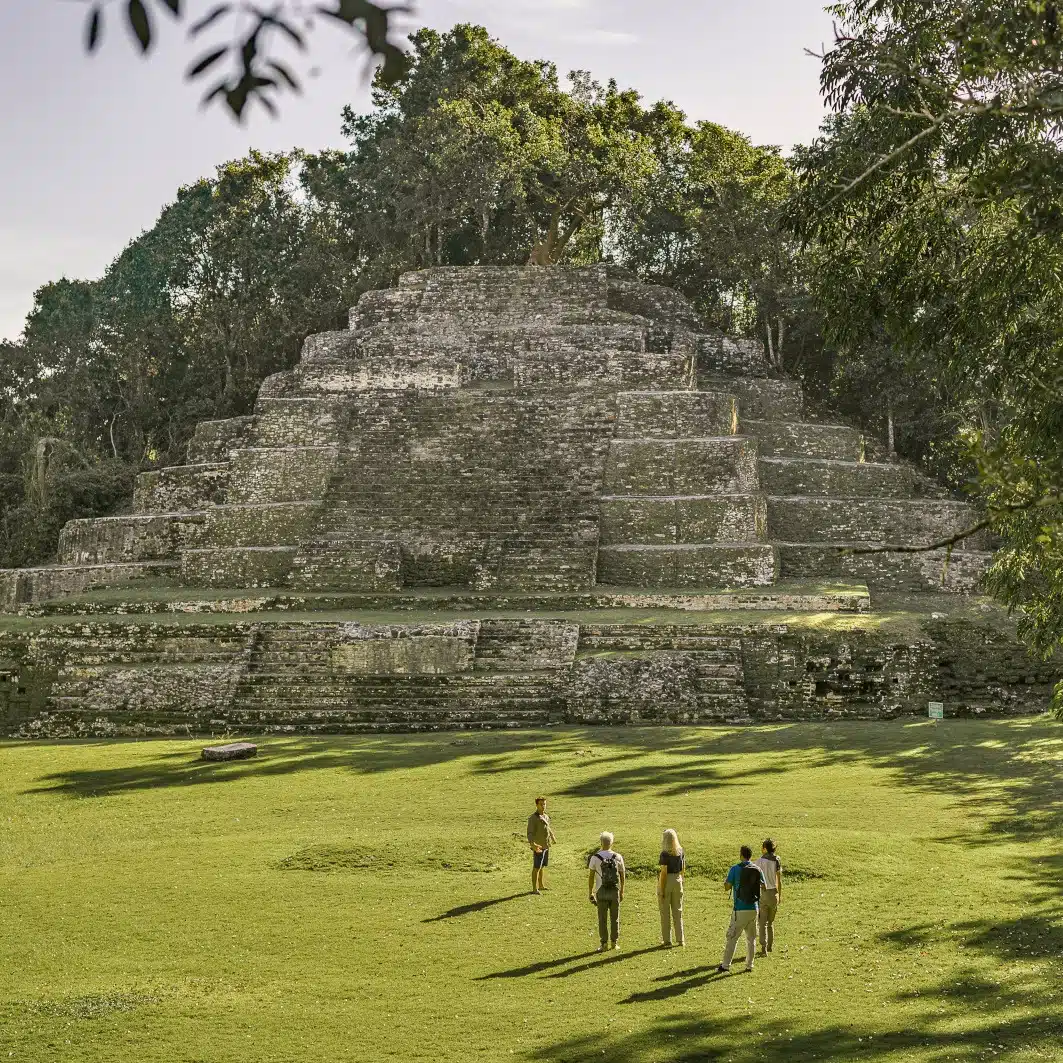
Join our Central America luxury expedition cruises
Bring your bird field guide, your binoculars, and of course, your camera, and take wing with Ponant on one of our Central America luxury expedition cruises, to enjoy a peak birding experience.


